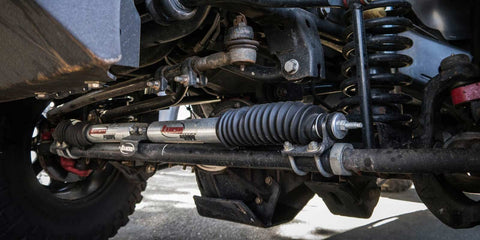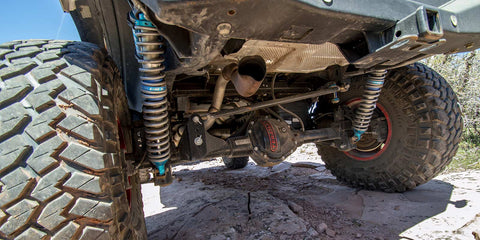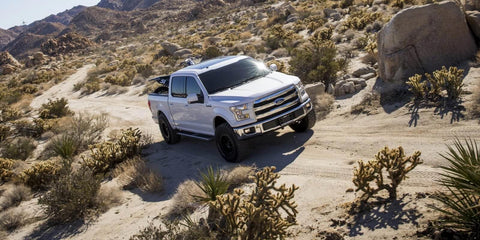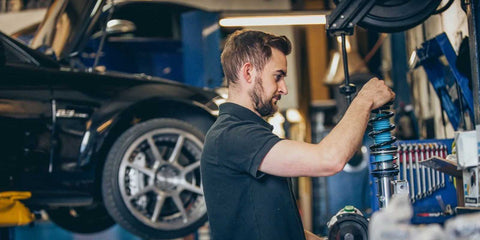Shocks and Struts Differences, the Definitive Guide
Posted by Brandon Sevestre on

Shock Absorber Purpose
Normal shock absorbers, also called dampers in traditional circles, have the primary role of controlling energy delivered from the road to the vehicle's suspension and related components. Shock absorbers dissipate energy through hydraulic shock fluid inside the shock, which is controlled by valving of the piston. The shock piston controls how much and how fast fluid is moved through the shock, thus giving different damping characteristics to the vehicle.
The amount of resistance a shock absorber develops depends on the speed of the suspension and design of the piston, valve shims, and orifices (also known as bleed holes). All modern shock absorbers are velocity sensitive hydraulic damping devices - meaning the faster the suspension moves, the more resistance the shock absorber provides. Because of this feature, shock absorbers adjust to road conditions, and also why some shocks can be compressed and extended by hand.

Strut Purpose
A strut is one of the major components of a vehicle's suspension and front end handling geometry. Found mostly in independent suspension systems, struts will house a coil spring, mounted on a spring perch, which is attached to a shock absorber (its own damping mechanism). Internally, a strut is very similar to a shock absorber, both have shock fluid, active piston, and valved appropriately for the specific vehicle.
Struts also perform the job of structural support for the vehicle and its suspension. Coil springs on the strut will hold up and alter the ride height of the vehicle, along with impacting alignment and energy transfer from the road. Not all coil springs and struts are a perfect match though, different rated springs (lifted or lowered) do not always match perfectly with a factory strut. Energy from the road is received differently by a stiff spring compared to a factory spring which has softer spring rates. If the strut isn't tuned to match this kind of response, expect an uncomfortable ride.
What Both Do
- Both shocks and struts primary focus is to keep the tires in contact with the ground, as much as possible. When a tire hits a bump, the responsive action is first determined by compression valving (how firm the shock responds to the tire going up), and then by rebound valving (how quickly the tire drops away from the vehicle to contact the ground).
- Both dampers maintain vehicle balance during turns and aggressive maneuvers by keeping all 4 corners in contact with the ground with equal load.
- Both shocks and struts attemtp to maintain equal vehicle load on all 4 corners, ensuring that each tire sees equal wear, if one or more corners of your vehicle are seeing unusual tire wear, worn shocks are sometimes the culprit.





